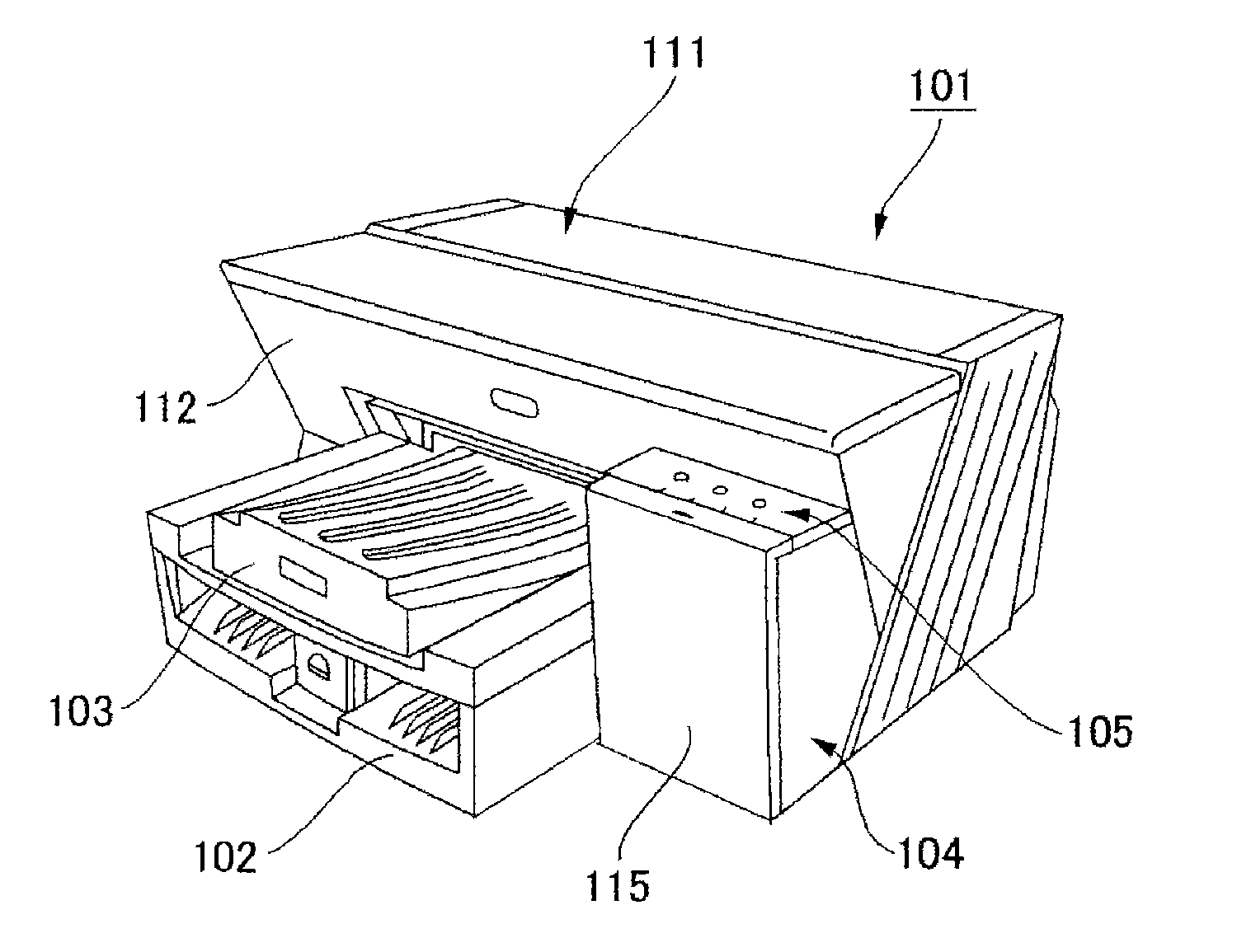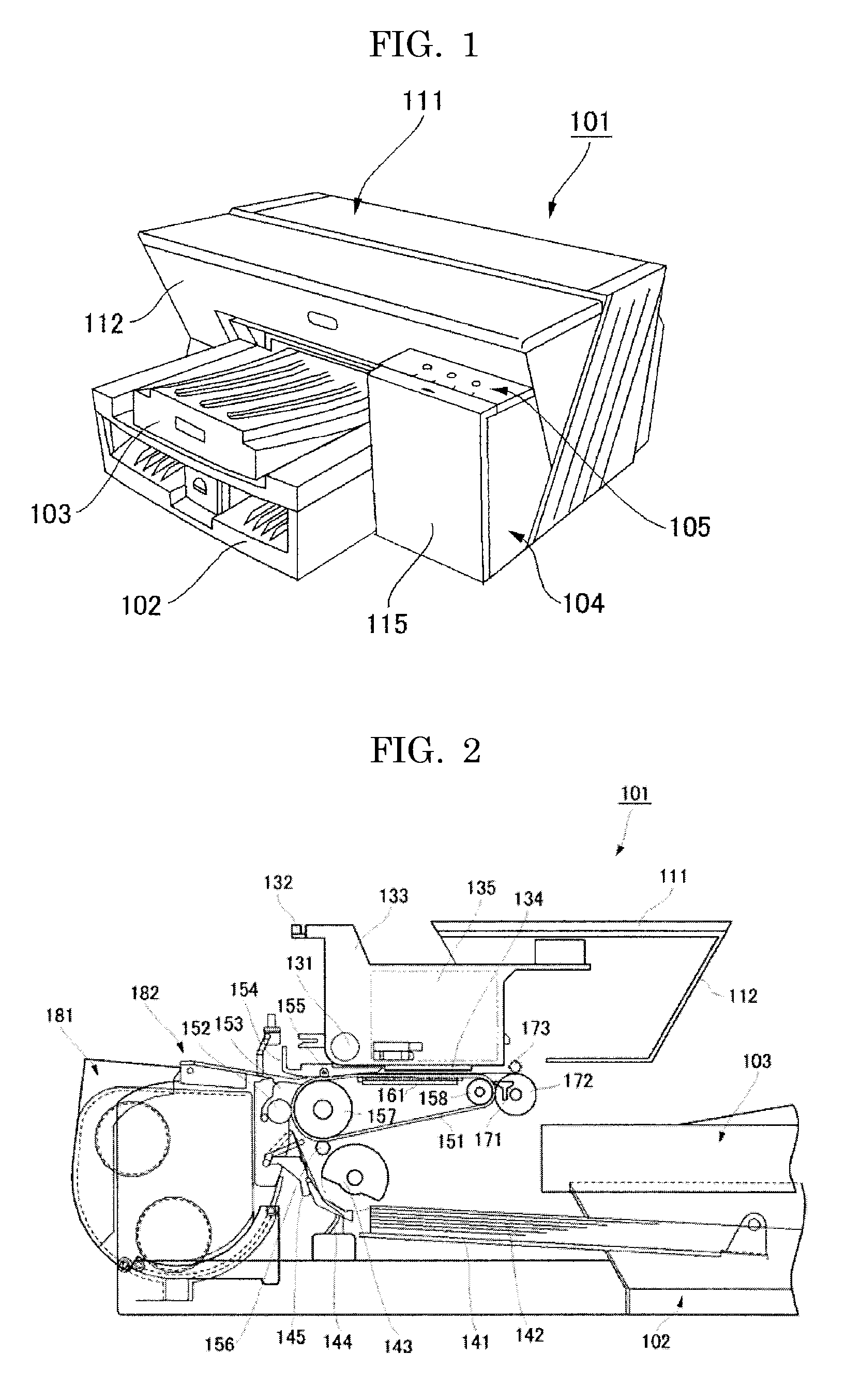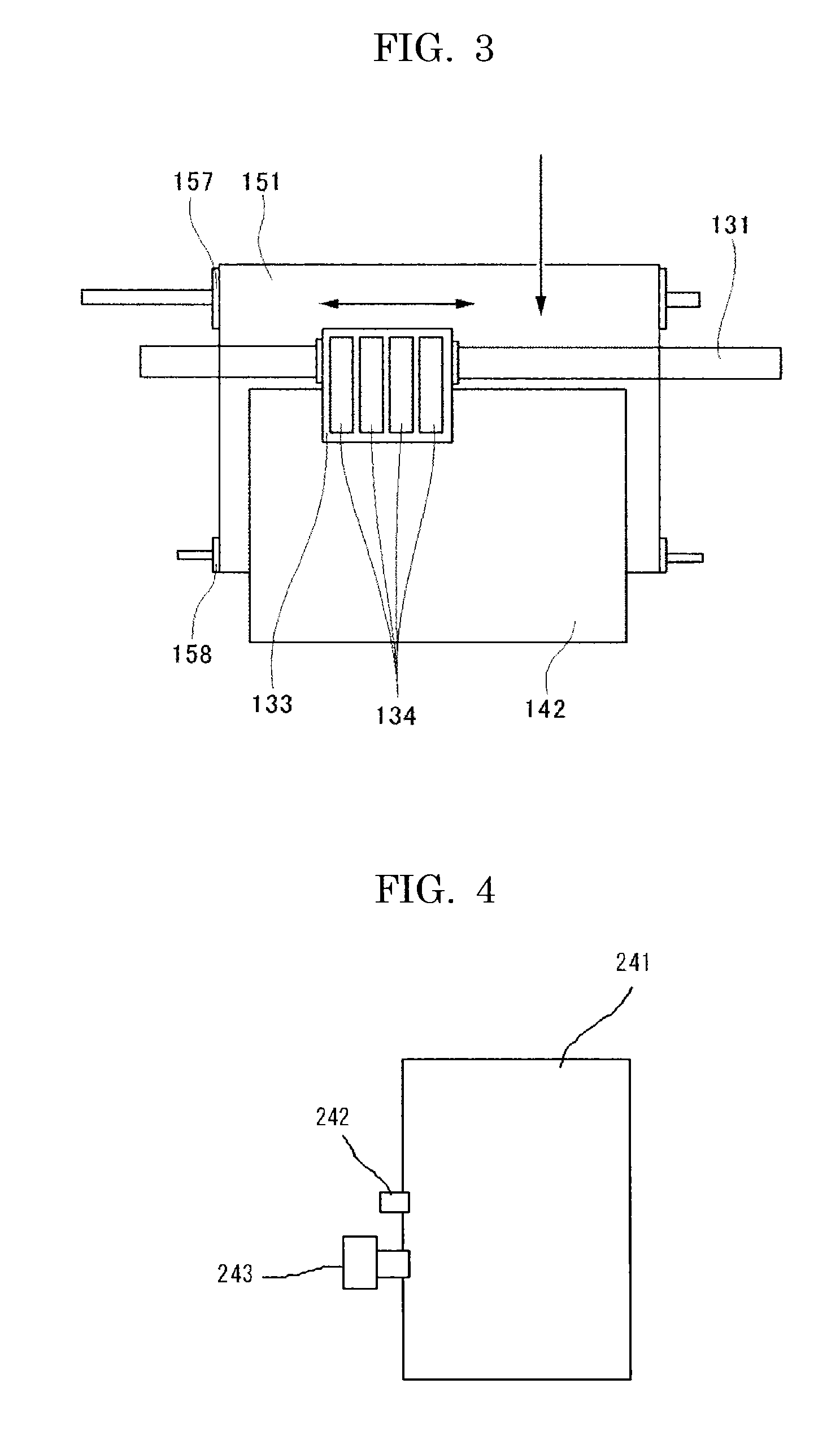Inkjet recording apparatus, method for inkjet recording, and ink
a technology of inkjet recording and recording nozzle, which is applied in the direction of inks, instruments, transportation and packaging, etc., can solve the problems of water-repellency decrease, and achieve excellent storage stability and discharge stability, prevent water-repellency drop of nozzle, and excellent discharge stability
- Summary
- Abstract
- Description
- Claims
- Application Information
AI Technical Summary
Benefits of technology
Problems solved by technology
Method used
Image
Examples
synthesis example 1
Black Pigment Dispersion Liquid Partially Coated with Resin A
[0190]First, for preparation of a polymer solution, the inside of a 1 L flask equipped with a mechanical stirrer, a thermometer, a nitrogen gas inlet tube, a reflux tube, and a dripping funnel was sufficiently substituted with nitrogen gas. Then, 11.2 g of styrene, 2.8 g of acrylic acid, 12.0 g of lauryl methacrylate, 4.0 g of polyethylene glycol methacrylate, 4.0 g of styrene macromer (trade name: AS-6, manufactured by TOAGOSEI CO., LTD.) and 0.4 g of mercapto ethanol were put in the flask, and the temperature of the components was raised to 65° C. Next, a mixture solution of 100.8 g of styrene, 25.2 g of acrylic acid, 108.0 g of lauryl methacrylate, 36.0 g of polyethylene glycol methacrylate, 60.0 g of hydroxy ethyl methacrylate, 36.0 g of styrene macromer, 3.6 g of mercapto ethanol, 2.4 g of azobis dimethylvaleronitrile, and 18 g of methylethylketone was added dropwise into the flask for 2.5 hours.
[0191]After adding the...
synthesis example 2
Black Pigment Dispersion Liquid Partially Coated with Resin B
[0193][Black pigment dispersion liquid partially coated with resin B] was obtained in the same manner as in Synthesis Example 1, except that the average pore size of the membrane filter used in filtration was changed to 1.2 μm.
[0194]The number of coarse particles in 5 μL of the thus obtained pigment dispersion liquid was measured with ACCUSIZER 780 (manufactured by Particle Sizing Systems Inc.). The number of coarse particles having a particle diameter of 0.5 μm or more was determined as 1.4×106, and the number of coarse particles having a particle diameter of 1.0 μm or more was determined as 1.3×104.
synthesis example 3
Black Pigment Dispersion Liquid Partially Coated with Resin C
[0195][Black pigment dispersion liquid partially coated with resin C] was obtained in the same manner as in Synthesis Example 1, except that the average pore size of the membrane filter used in filtration was changed to 0.45 μm.
[0196]The number of coarse particles in 5 μL of the thus obtained pigment dispersion liquid was measured with ACCUSIZER 780 (manufactured by Particle Sizing Systems Inc.). The number of coarse particles having a particle diameter of 0.5 μm or more was determined as 1.8×104, and the number of coarse particles having a particle diameter of 1.0 μm or more was determined as 7.5×102.
PUM
| Property | Measurement | Unit |
|---|---|---|
| particle diameter | aaaaa | aaaaa |
| particle diameter | aaaaa | aaaaa |
| flow rate | aaaaa | aaaaa |
Abstract
Description
Claims
Application Information
 Login to View More
Login to View More - R&D
- Intellectual Property
- Life Sciences
- Materials
- Tech Scout
- Unparalleled Data Quality
- Higher Quality Content
- 60% Fewer Hallucinations
Browse by: Latest US Patents, China's latest patents, Technical Efficacy Thesaurus, Application Domain, Technology Topic, Popular Technical Reports.
© 2025 PatSnap. All rights reserved.Legal|Privacy policy|Modern Slavery Act Transparency Statement|Sitemap|About US| Contact US: help@patsnap.com



